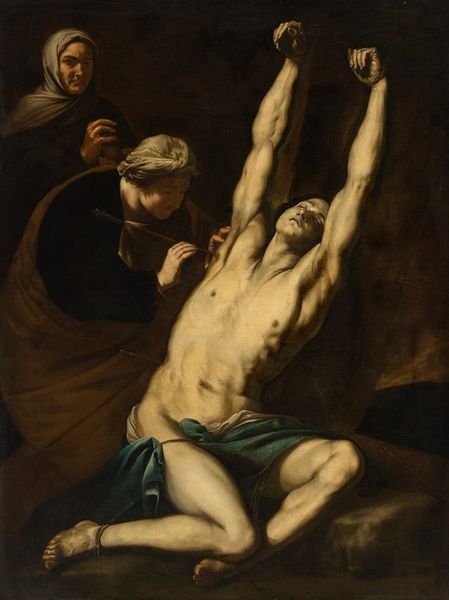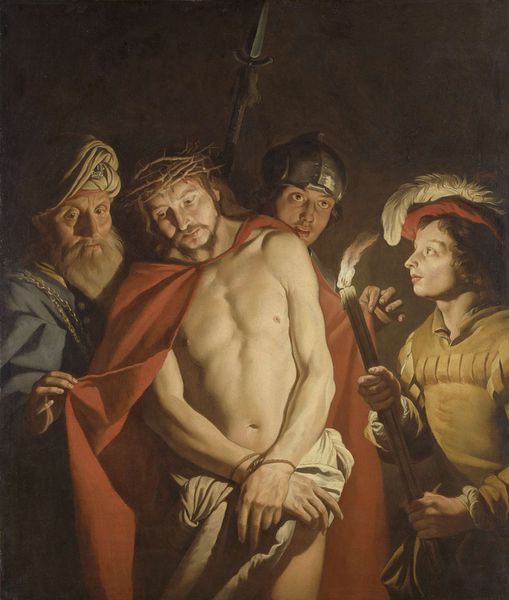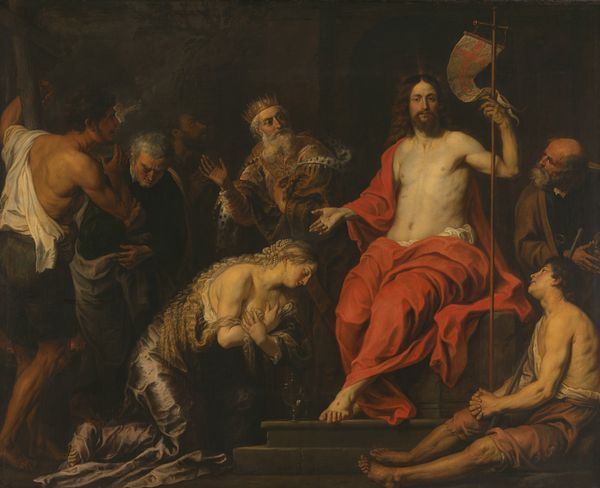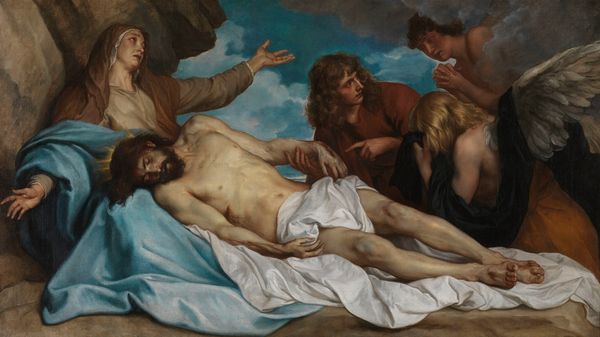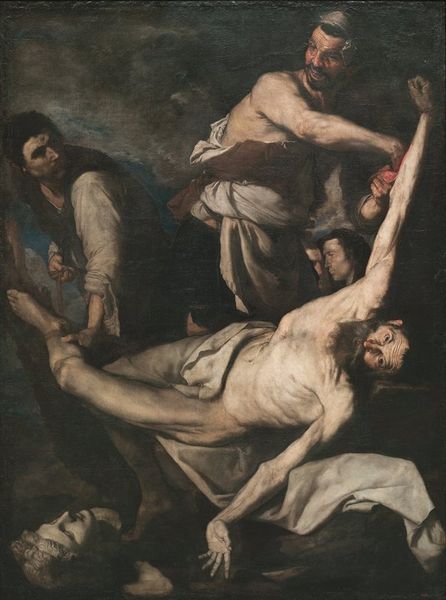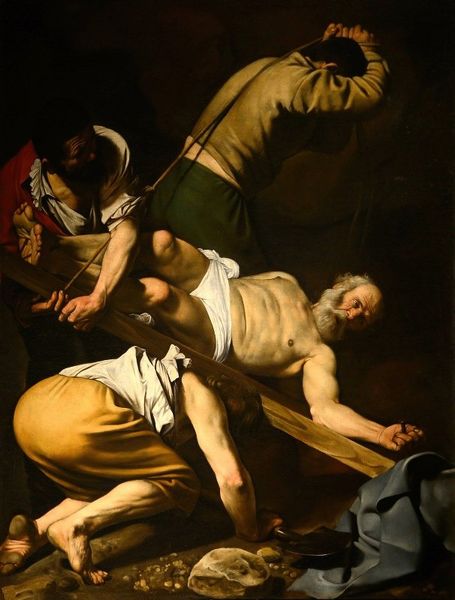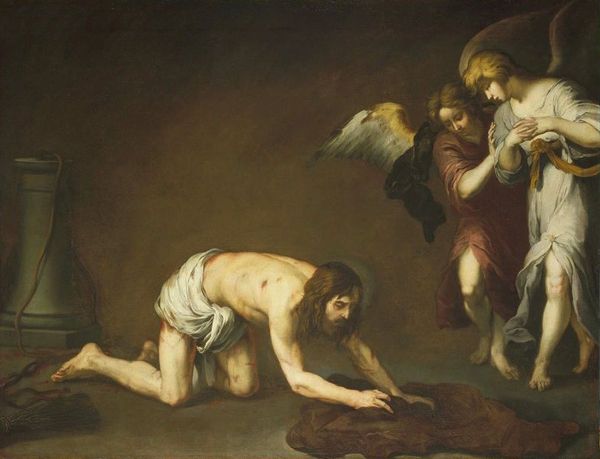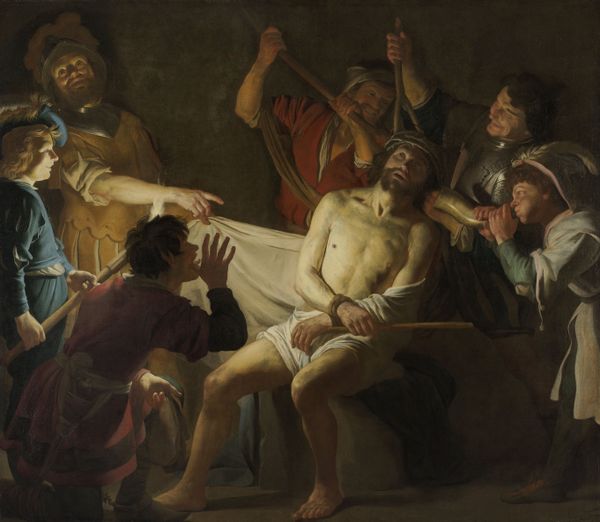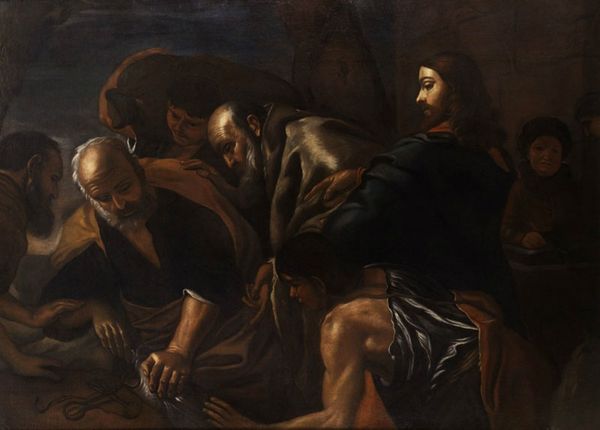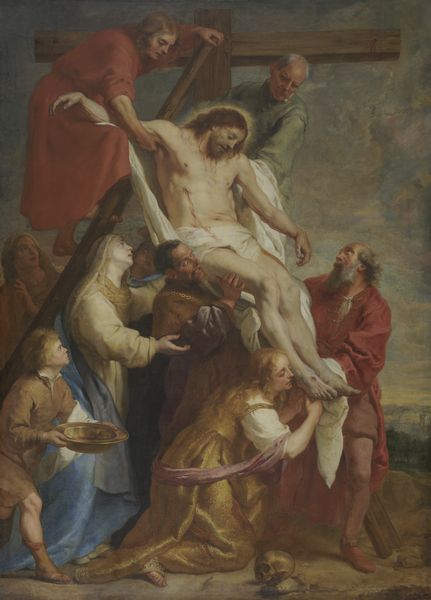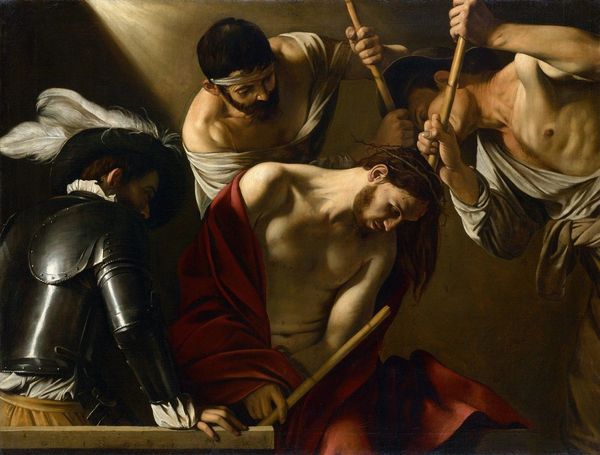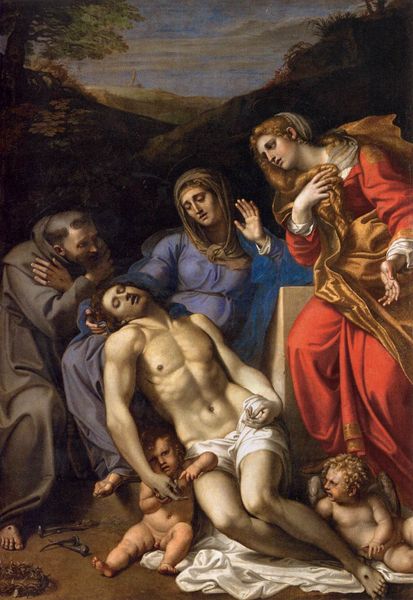
Christ After the Flagellation Contemplated by the Christian Soul 1628
0:00
0:00
oil-paint
#
portrait
#
baroque
#
oil-paint
#
figuration
#
jesus-christ
#
underpainting
#
christianity
#
mythology
#
human
#
painting painterly
#
history-painting
#
portrait art
#
christ
Dimensions: 206.4 x 165.1 cm
Copyright: Public domain
Curator: Diego Velázquez's oil painting, "Christ After the Flagellation Contemplated by the Christian Soul," completed in 1628, masterfully depicts a moment of intense suffering and spiritual reflection. Editor: It strikes me as remarkably somber. The stark lighting and muted colors seem to amplify the raw emotionality of the scene, almost unbearably so. Curator: Precisely. Velázquez’s command of Baroque naturalism invests the viewer into a deeply personal experience. We see the rope, the pillar…the very instruments of Christ's suffering rendered with unwavering accuracy. Notice how the soul’s figure contemplates what she’s witnessing; a soul’s access to Christ’s pain is depicted with tender and evocative expression. Editor: It’s difficult to ignore the painting’s patriarchal symbolism, though. Even in suffering, Christ remains central and dominant, while the soul’s vulnerability, framed within this devotional scene, risks perpetuating harmful religious tropes, about sacrifice, suffering, gender and the church. How might contemporary interpretations challenge these traditional power dynamics within religious narratives? Curator: I understand your concerns regarding traditional symbolism, but it also might reveal archetypal stories about human conditions. Velazquez, for example, draws attention to a symbolic exchange by employing archetypes from Judeo-Christian tradition. The image also recalls early iconographic traditions with Byzantine and Medieval interpretations, in that they attempt to portray access to, and emotional availability through the symbol. Editor: Even acknowledging its painterly and symbolistic skill, can this artwork transcend its historical context? How do we ensure its message promotes empathy rather than romanticizing suffering? I struggle to connect with religious symbolism, I find it more harmful than generative. Curator: I believe this painting still provides significant cultural insight; this interpretation is key in any culture interested in the power of shared symbolism. Whether approached religiously or analytically, "Christ After the Flagellation" remains a powerful and complex visual expression of agony and devotion. Editor: It really challenges us to critically examine how art shapes and perpetuates the culture through symbols. Thank you for allowing a more balanced view of this piece.
Comments
No comments
Be the first to comment and join the conversation on the ultimate creative platform.

